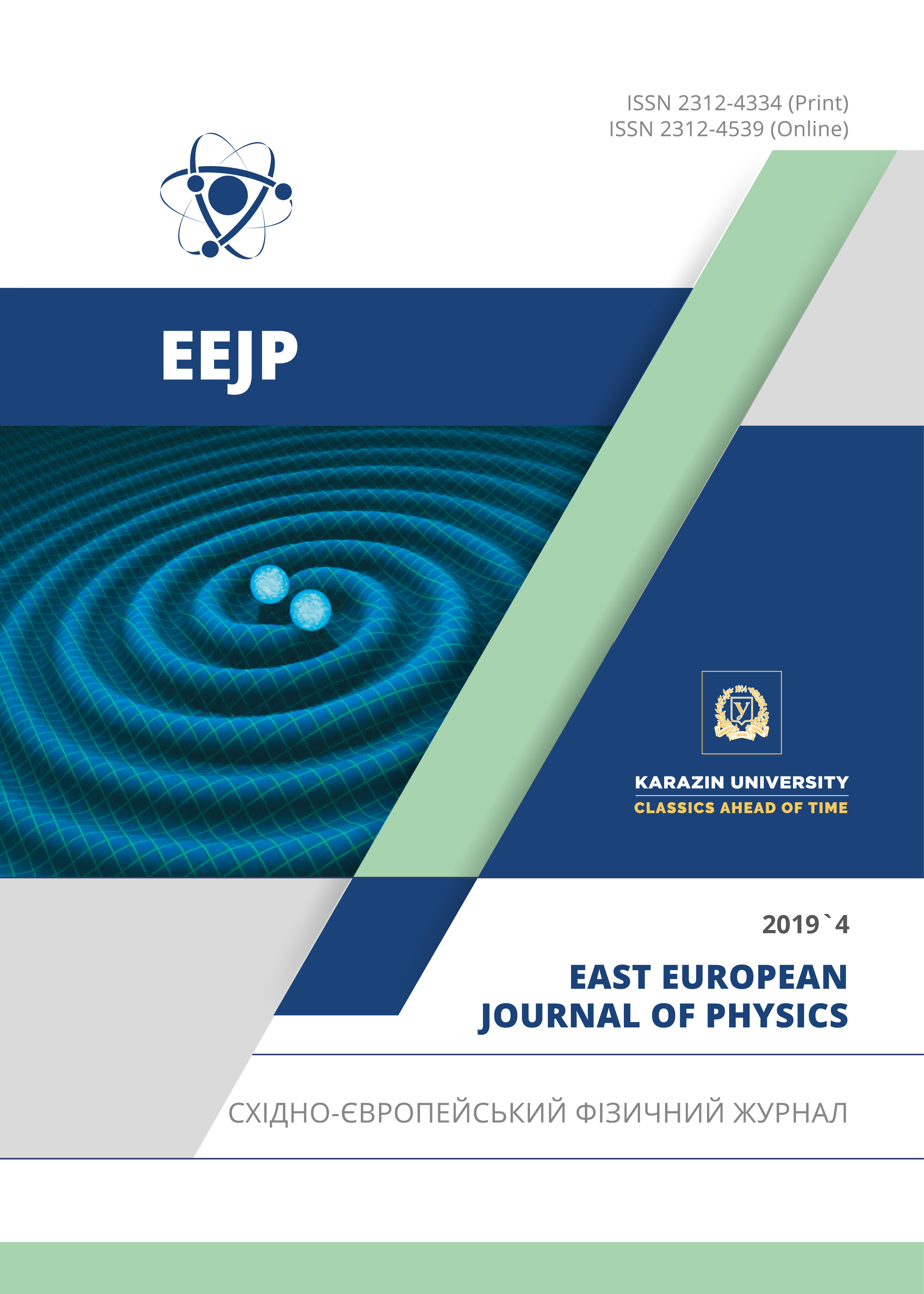Phase Transitions in Convection
Abstract
The paper presents the results of the study of the models of convective instability near its threshold of thin layers of liquid and gas bounded by poorly conducting walls. These models single out one spatial scale of interaction, leaving the possibility for the evolution of the system to choose the symmetry character. This is due to the fact that the conditions for the realization of the modes of convective instability near the threshold are chosen. All spatial perturbations of the same spatial scale, but of different orientations, interact with each other. It turned out that the presence of minima of the interaction potential of the Proctor-Sivashinsky equation modes, the absolute value of the wave number vectors of which is unchanged, determines the choice of symmetry and, accordingly, the characteristics of the spatial structure. In the case of a more realistic model of convection described by the Proctor-Sivashinsky equation, it was possible to observe both the first-order phase transition and the second-order phase transition and detect the form of the state function, which is responsible for the topology of the resulting convective structures: metastable rolls and stable square cells. In this paper, it is shown that the nature of the structural-phase transition in a liquid when taking into account the dependence of viscosity on temperature in the Proctor-Sivashinsky model is similar to the case of the absence of such a dependence. The transition time turns out to be the same, despite the fact that a different structure is formed - hexagonal convective cells. As in the Swift-Hohenberg model, a hard mode for the formation of hexagonal cells in a gas medium is possible only for a sufficiently noticeable dependence of its viscosity on temperature. The phase transition times are inversely proportional to the difference in the values of this function for two consecutive states. A similar description of phase transitions did not use phenomenological approaches and various speculative considerations, which allows for a closer look at the nature of transients.
Downloads
References
J. Chapman and M.R.E. Proctor, J. Fluid Mech. 101, 759–765 (1980), https://doi.org/10.1017/S0022112080001917.
V. Gertsberg, and G.E. Sivashinsky, Prog. Theor. Phys. 66, 1219–1229 (1981), https://doi.org/10.1143/PTP.66.1219.
J.V. Swift and P.C. Hohenberg, Phys. Rev. A, 15, 319 (1977), https://doi.org/10.1103/PhysRevA.15.319.
M.I. Rabinovich, A.L. Fabricant and L.S. Zimring, Soviet Physics-Uspekhi, 162(8), 1-42 (1992).
E. Bodenschatz, J.R. de Bruyn, G. Ahlers and D. Connell, Preprint, (Santa Barbara, 1991).
I.V. Gushchin, A.V. Kirichok and V.M. Kuklin, VANT series “Plasma Electronics and New Methods of Acceleration”, 4, 252 254, (2015).
I.V. Gushchin, A.V. Kirichok and V.M. Kuklin, Journal of Kharkiv National University, physical series “Nuclei, Particles, Fields”, 1040(57), 4-27 (2013), https://periodicals.karazin.ua/eejp/article/view/13556
Copyright (c) 2019 Ivan V. Gushchin, Volodymyr M. Kuklin, Eugen V. Poklonskiy

This work is licensed under a Creative Commons Attribution 4.0 International License.
Authors who publish with this journal agree to the following terms:
- Authors retain copyright and grant the journal right of first publication with the work simultaneously licensed under a Creative Commons Attribution License that allows others to share the work with an acknowledgment of the work's authorship and initial publication in this journal.
- Authors are able to enter into separate, additional contractual arrangements for the non-exclusive distribution of the journal's published version of the work (e.g., post it to an institutional repository or publish it in a book), with an acknowledgment of its initial publication in this journal.
- Authors are permitted and encouraged to post their work online (e.g., in institutional repositories or on their website) prior to and during the submission process, as it can lead to productive exchanges, as well as earlier and greater citation of published work (See The Effect of Open Access).








